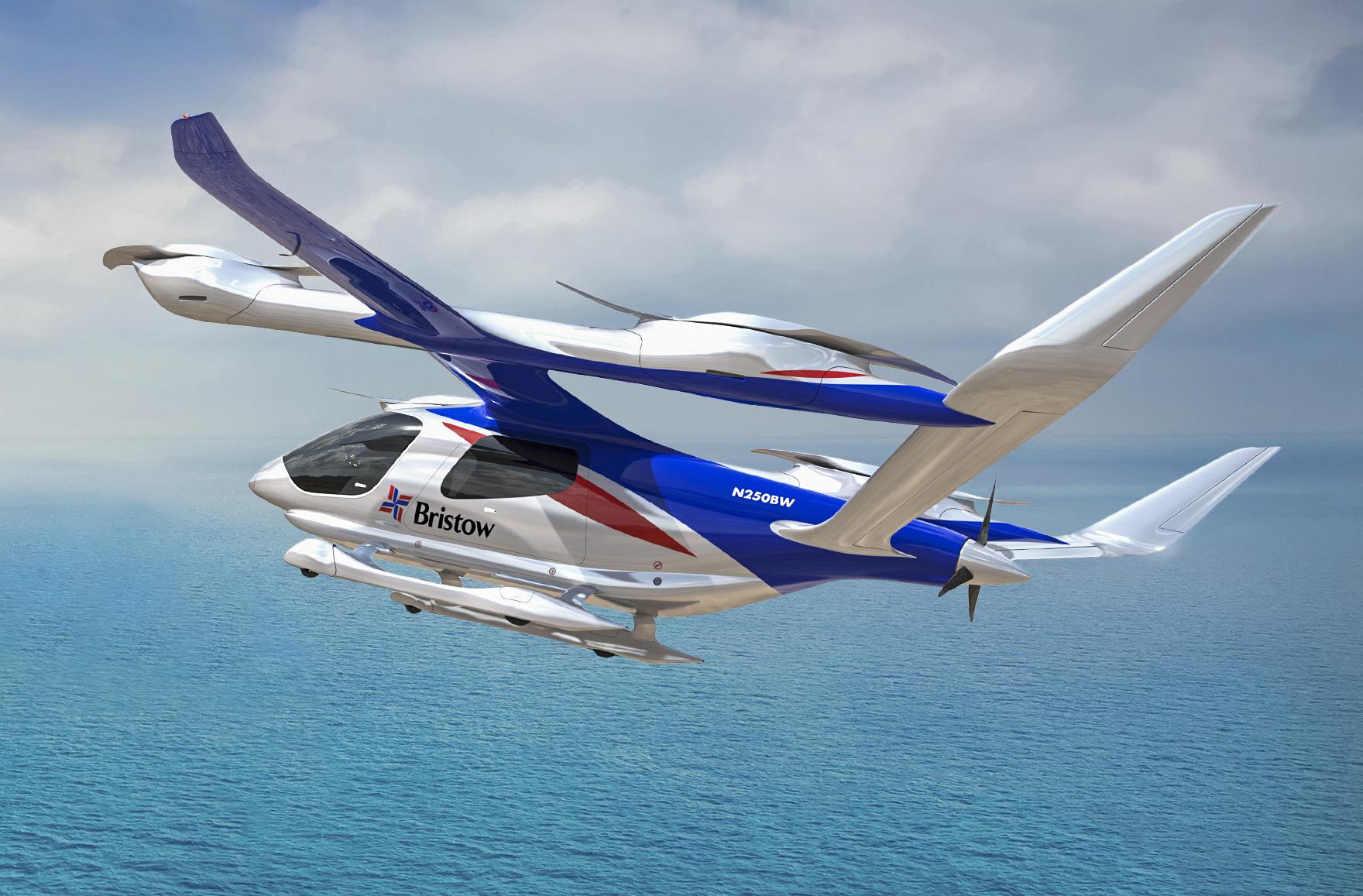
Bristow Group has placed conditional orders with six eVTOL startups and one eSTOL developer.
As the world’s second-largest helicopter operator, Bristow Group knows a thing or two about vertical lift.
With the onset of commercial electric vertical takeoff and landing vehicle (eVTOL) services expected later this decade, the Texas-based company has been angling to solidify its position as an early adopter and leader in the emerging advanced air mobility (AAM) sector. To that end, Bristow has placed conditional orders with six eVTOL startups: Beta Technologies, Elroy Air, Eve Air Mobility, Lilium, Overair and Vertical Aerospace, as well as Electra.Aero, an electric short takeoff and landing vehicle (eSTOL) developer.
“When we think about AAM and who we partner with, diversification is a big driver in that,” explains Mandy Nelson, Bristow’s director of strategic relationships for AAM. “Bristow is not going to pick just one aircraft; we need the right tool for the right mission and that means having a diversified tool set.”
Despite its enthusiasm about AAM, Bristow is staying realistic with its expectations for the speed at which the market for eVTOLs will develop and mature. “We’ve seen some of these timelines pushed to the right, so right now we think that after 2025 seems most realistic,” Nelson says of a potential launch date for commercial eVTOL services. “We’re ready to take delivery of an eVTOL as soon as they’re certified, but we’re a very pragmatic organization when it comes to how we plan for the future.”
Even after it receives those initial eVTOLs, Bristow is still planning a gradual ramp-up in services that will only achieve a considerable scale in the next decade. “I think it’s not until 2030 and beyond until you see eVTOLs operating at any type of meaningful scale,” Nelson says. “For Bristow, the more immediate focus is getting our hands on them and doing some early demonstrations and building up our operational capabilities with those aircraft.”
Nelson said that Bristow’s relatively conservative outlook could be attributed to the company’s long history working with legacy aerospace OEMs like Airbus, Leonardo and Sikorsky to help bring new helicopters into service. “One of the things that Bristow brings to the AAM conversation is pragmatism,” she says. “We realize it often takes longer than planned to bring new aircraft into service.”
Rather than replace its existing helicopter services, Bristow is focused on using the eVTOLs to expand its core businesses, which include providing services for offshore oil and gas companies, search-and-rescue missions and cargo and logistics for governments and private organizations. As examples, Bristow could use the vehicles to ferry energy workers to bases before shuttling them to offshore platforms, or to assist its existing clients with the movement of cargo, Nelson says.
Another opportunity would be to expand its reach within remote and underserved regions across Africa and the Middle East, which Nelson says could be achieved with the help of uncrewed cargo drones like Elroy Air’s Chaparral. “I think that’s an excellent application in these remote, austere environments–and Africa is a great example of that,” Nelson says. “I don’t think every eVTOL is well-suited for that specific mission, but there are some, and that’s why we’ve picked a diverse set of partners that are well-suited for those types of environments.”
Nelson said she does see a risk that the lower capital expenses and operating costs of eVTOLs will attract some inexperienced operators who may lack safety management systems and could damage the public’s confidence in the emerging AAM sector if there are early accidents or safety incidents.
“That’s why we’re so focused on getting operators to the table early to start having these discussions about best practices around safety,” she says. “Any early incident or accident could really damage the industry at large.”





